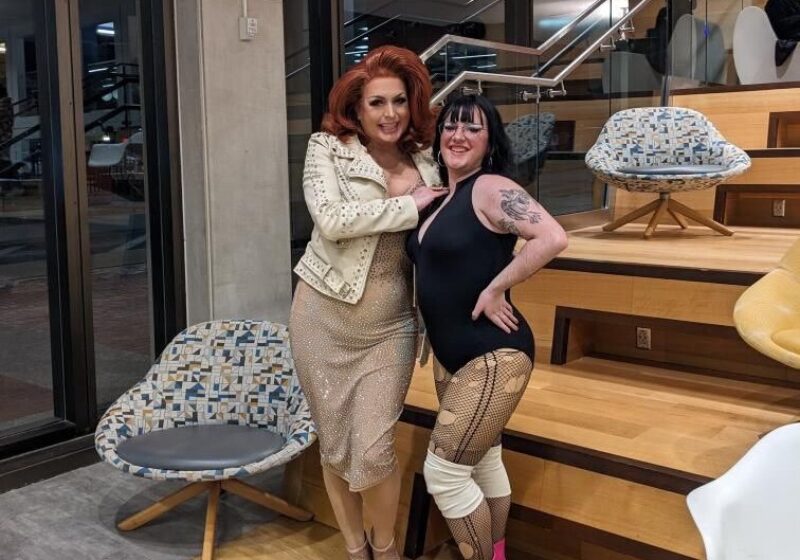Now more than ever, America is grappling with its history of violence and oppression towards people of color. Last week, the Hartnett Gallery opened its first exhibition of the year, entitled “From #Ferguson,” featuring works by Bryce Olen Robinson. A native of Ferguson, Missouri, Robinson’s work speaks to the racism that he has seen and the consequences it has had for him and the nation at-large.
To understand Robinson’s art, you must understand its context. Robinson grew up in Ferguson, went to college in Chicago and returned to St. Louis to attend graduate school at Washington University. It is there that the direction of his art changed drastically, when one day he drove around looking for inspiration. He eventually found himself in Kinloch, a suburb of St. Louis adjacent to Ferguson and the first African-American community in Missouri. Robinson researched the history of the city and found that, despite systematic oppression, it was a prosperous community until the 1980s, when it rapidly fell into decline. After spending many months in Kinloch, he built relationships with locals and ran a children’s day camp for three summers.
Following graduate school, his next project was to create a sculpture park in Ferguson, which opened in June 2014, just two months before Michael Brown was shot and killed on Aug. 9. Suddenly, Robinson found a new meaning in his art. As he explained, “I had always wanted to make work about my home, about racism, about the structure of St. Louis. I always wished I could talk about it. I didn’t wish for this.”
Some of the pieces in “From #Ferguson” are artifacts of the riots, like “Prime Beauty” (2015), a neon sign from a makeup store that was looted and razed. Next to the sign is an AP photograph—one of many that were published—of it lying ironically among the rubble. By taking the sign from the debris, Robinson hoped to reclaim a piece of Ferguson that had been distorted by the media, giving the residents back a little bit of their own voice.
Other pieces are more conceptual, such as “#Ferguson” (2014), a massive wooden map of Ferguson on which are branded hash signs by, as Robinson specifies, “people who have never been there.” An influx of national attention quickly changed how Michael Brown’s death was perceived, producing positive and negative consequences. If the story had not received so much attention, Robinson said, “I don’t think it would have burned.” But he said he also realizes how Ferguson has come to signify so much more to the nation and the world. In that way, “#Ferguson” is an ambiguous piece, acutely aware of how fire has burned through the city and damaged a community, but left the ground ready to be reseeded and for new life to grow.
Last year, thanks to the work of many, the issues that Michael Brown’s death brought to light came to this campus, when student activists raised their voices against racial injustice in the United States. Bryce Olen Robinson joins that chorus, revealing to every student the more and less obvious effects of racism. But his work, whether intentionally or not, urges us to do something about it, to not stand by and let it continue.
“From #Ferguson” runs through Sept. 27.
Libbey is a member of the class of 2016.





